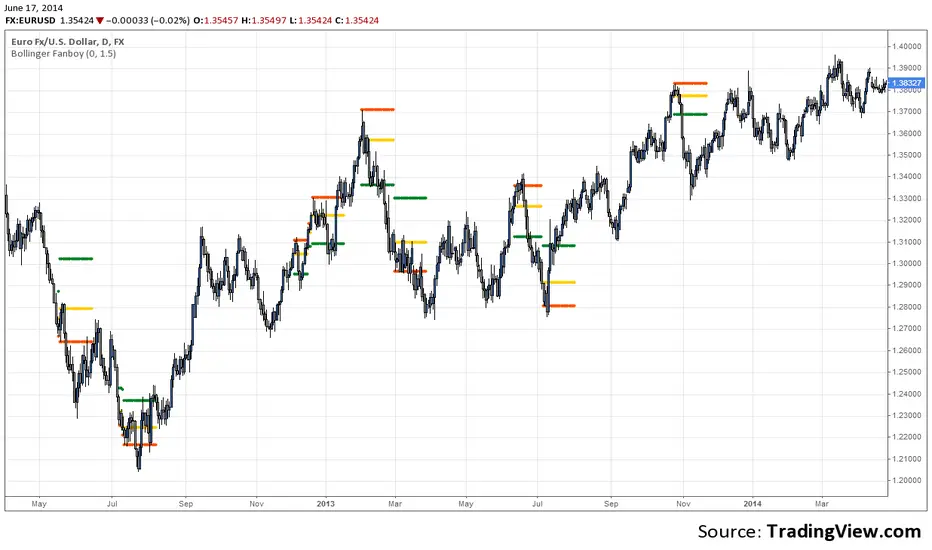OPEN-SOURCE SCRIPT
Bollinger Fanboy v4.0

Set spread value from your broker, eg my broker has a spread of 0.0003 for EURUSD. You can set your required profit ratio eg 1.5 means risk 1 to win 1.5. Enter if price crosses orange (or set a buy stop order or sell limit order) and set stoploss at red and take profit at green. Setup lasts for 20 bars. If it doesn't cross the orange in that time, forget it. Long if red is below orange, short if red is above orange. Recommended to be used on 4H, D, W charts only. Use at your own risk. I cannot be held liable for any damages financial or otherwise, directly or indirectly related to using this script and trading strategy.
Copyright 2014 Michael Edwards (info@bollingerfanboy.com)
bollingerfanboy.com
Copyright 2014 Michael Edwards (info@bollingerfanboy.com)
bollingerfanboy.com
開源腳本
本著TradingView的真正精神,此腳本的創建者將其開源,以便交易者可以查看和驗證其功能。向作者致敬!雖然您可以免費使用它,但請記住,重新發佈程式碼必須遵守我們的網站規則。
免責聲明
這些資訊和出版物並不意味著也不構成TradingView提供或認可的金融、投資、交易或其他類型的意見或建議。請在使用條款閱讀更多資訊。
開源腳本
本著TradingView的真正精神,此腳本的創建者將其開源,以便交易者可以查看和驗證其功能。向作者致敬!雖然您可以免費使用它,但請記住,重新發佈程式碼必須遵守我們的網站規則。
免責聲明
這些資訊和出版物並不意味著也不構成TradingView提供或認可的金融、投資、交易或其他類型的意見或建議。請在使用條款閱讀更多資訊。